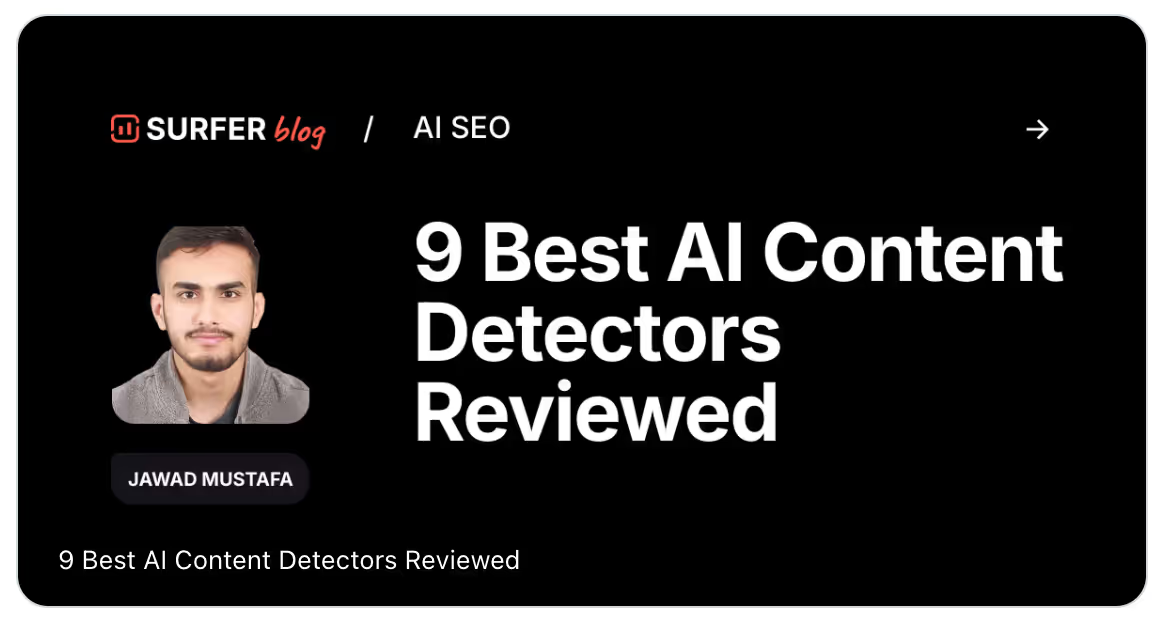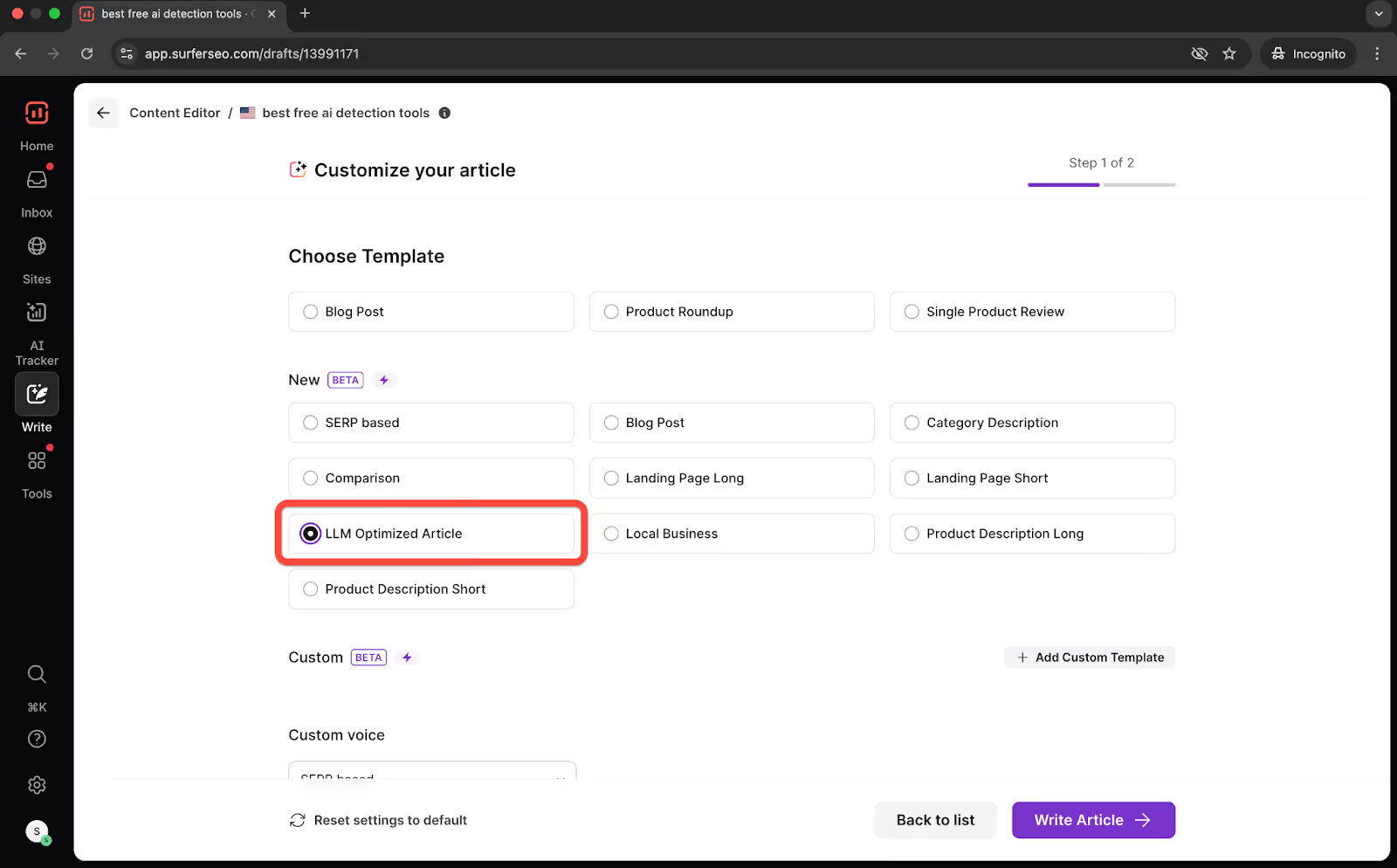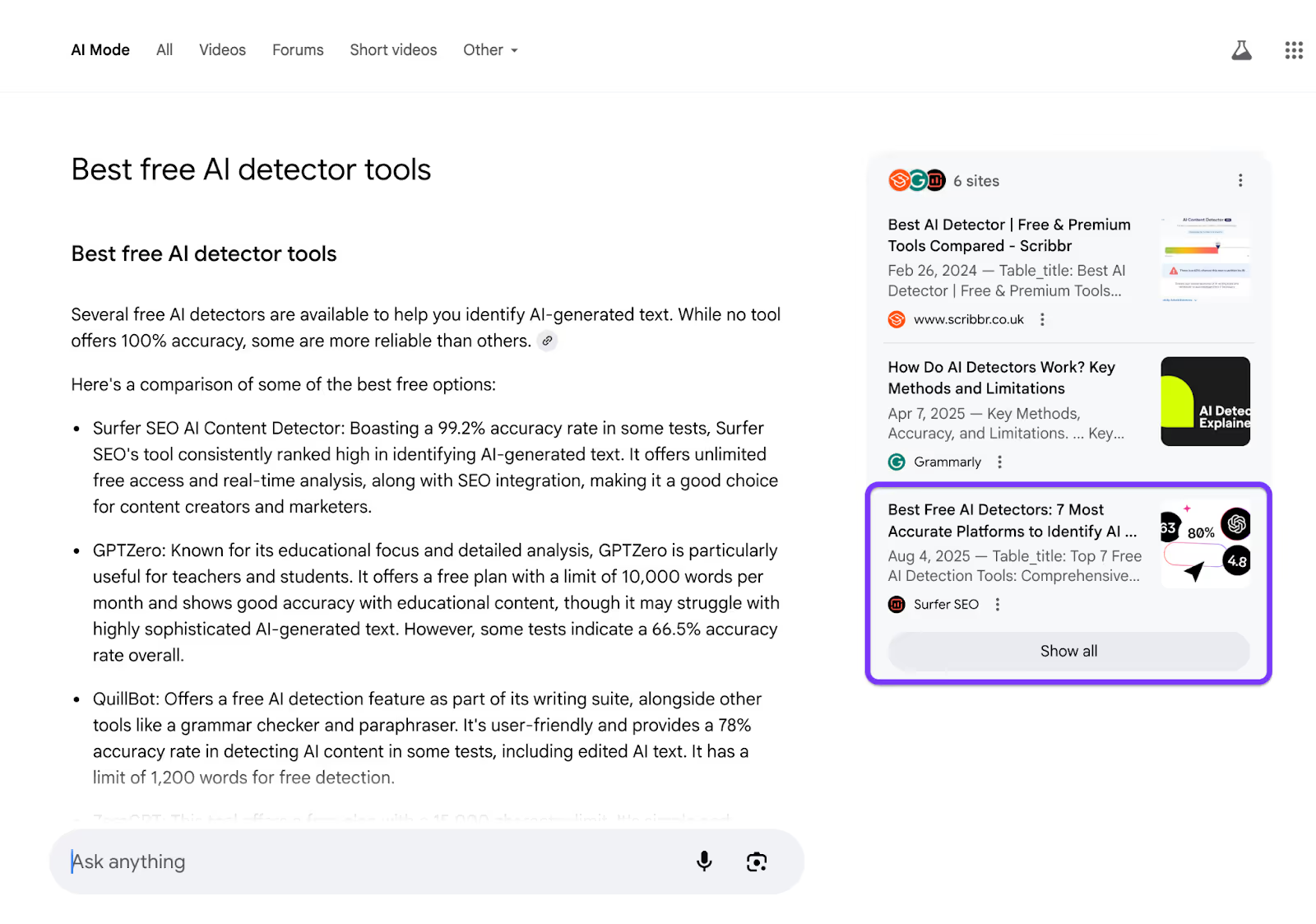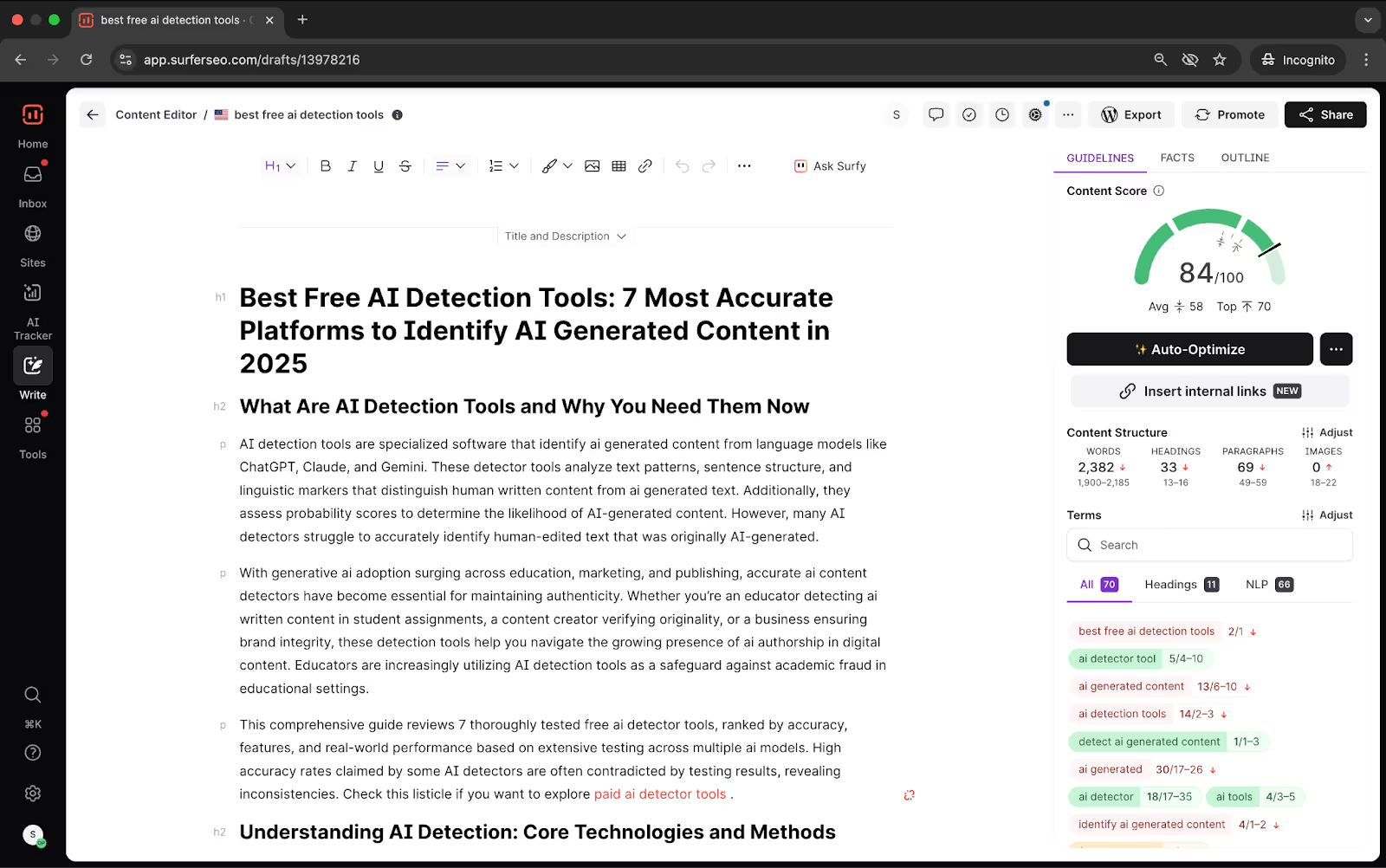Twenty-four hours ago, Michal Suski, Head of Innovation at Surfer noticed that we were not included as a source in Google’s AI answers for "free AI detection tools."
He dug deeper to find that Surfer had an article on "best AI content detection tools," but it didn’t cover the specific intent for the keyword "free."

A look at Google confirmed that search results for "free" AI tools were different from pages showing up for general AI detection queries.
This was an opportunity for us because we offer a free AI detector. Michal recognized this gap and acted quickly, creating a new dedicated page optimized explicitly for "best free AI detectors."
His idea was straightforward.
Generate a highly targeted AI-written article, and lightly edit it to test its citation potential inside Google’s AI answers.
If the page shows potential, edit and humanize it afterward to strengthen its value.
Michal used the LLM Optimized Article template in Surfer AI to generate the article. As the name suggests, this template is specifically designed to incorporate the best practices for LLM SEO optimization.

After a few minor edits, the article was published and immediately submitted to Google Search Console for indexing.
Within eight hours, the page was cited inside Google AI overviews and AI mode for "best free AI detectors."

Below, you can see it cited as a source in Google’s AI mode inside Surfer’s AI Tracker.

This little experiment validates several insights we’ve uncovered with our studies on Google’s AI search sources.
First, matching search intent is crucial. We already know from traditional SEO practices that content closely matching query intent is far more likely to be chosen by Google.
This is a fundamental principle that lends itself to Google’s AI answers as well.
We also know that authority and semantic structure matter significantly to be picked up by AI search platforms. Google's AI prefers structured, authoritative content.
Our article condensed detailed information into concise, digestible bullet points, a method shown by internal research to increase citation likelihood by 8.63%.

Internal studies show that breaking down complex content into sequential steps increased the likelihood of being cited by 5.42% while formatting paragraphs into bullet points boosted AIO inclusion by another 4.72%.
These points reinforce why Surfer's LLM optimized article quickly succeeded in being cited. Our template for LLM optimized content incorporates these techniques—clearly structured, semantically aligned, and intent-targeted content to match Google's AI sourcing criteria.
This quick exercise highlights Surfer’s ability to deliver actionable ranking insights within a single workflow.
You can replicate this as a repeatable blueprint across various keywords and niches, ensuring brand visibility where potential customers search.




